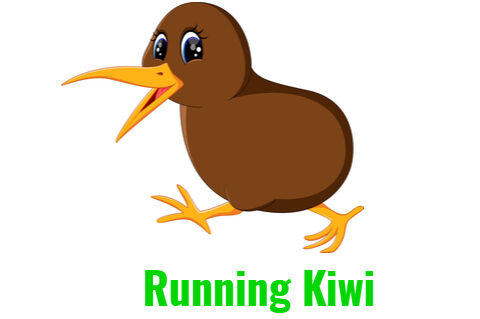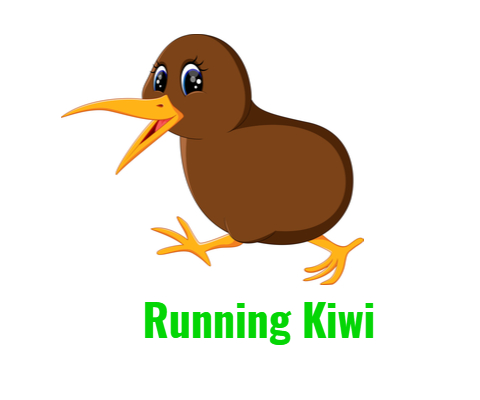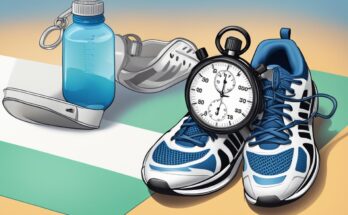Running is a popular form of exercise for many people, offering numerous physical and mental health benefits. However, as with any physical activity, runners can experience various types of discomfort and pain during or after their workouts. One common issue faced by runners is pain in the sole of the foot, which can range from mild to severe and can significantly impact performance and overall enjoyment of the activity.
The causes of pain in the sole of the foot while running can be diverse, including overuse, improper footwear, muscle imbalances, or structural abnormalities in the foot. It is essential for runners to understand the potential reasons for this pain to effectively address the issue and prevent it from interrupting their running routines. The following paragraphs will discuss tips and strategies to alleviate running-related pain in the sole of the foot, helping runners maintain their progress and avoid frustrating setbacks.
Causes of Running Pain on Sole of Foot
Plantar Fasciitis
Plantar Fasciitis is a common cause of pain in the sole of the foot while running. This condition occurs when the plantar fascia, a thick band of tissue connecting the heel bone to the toes, becomes inflamed. Runners with tight calf muscles, high arches, or those who run on hard surfaces are more prone to this problem. The pain typically feels like a stabbing sensation in the heel and can be worse in the morning or after periods of inactivity.
Stress Fractures
Stress fractures are tiny cracks in the bones and can develop from the repetitive impact of running. They often occur in the metatarsal bones, which are situated in the midfoot area. If a runner suddenly increases their mileage or training intensity without allowing adequate recovery time, they may develop stress fractures. The pain often intensifies during running and may also be felt when walking or standing.
Metatarsalgia
Metatarsalgia is characterized by pain and inflammation in the ball of the foot. This condition can result from excessive pressure on the metatarsal bones due to running, especially in individuals with high arches or tight calf muscles. The pain is often localized to the area below the toes and may feel like a burning or sharp sensation.
Morton’s Neuroma
Morton’s Neuroma is a painful condition caused by the thickening of a nerve in the foot, typically between the third and fourth toes. The thickened nerve can become compressed and irritated during running, leading to chronic pain and numbness in the toes. Runners with flat feet or those who habitually wear tight or ill-fitting shoes are more likely to develop this problem.
Bunion
A bunion is a bony bump that forms at the base of the big toe, causing it to deviate toward the other toes. This misalignment can create pressure and friction during running, leading to pain and inflammation in the joint. Runners with a family history of bunions or who wear narrow, inflexible shoes may be at a higher risk for developing this issue.
Tendonitis
Tendonitis refers to the inflammation of a tendon resulting from overuse or strain. The tendons attached to the foot muscles can become inflamed due to excessive running or improper footwear. Runners experiencing tendonitis may feel pain or tenderness in the foot, which can worsen during activity.
Arthritis
Arthritis, specifically osteoarthritis, can lead to pain in the foot during running due to the wear and tear of the cartilage that cushions the foot joints. Runners with a history of joint injuries or those participating in high-impact sports for many years can be more susceptible to arthritis-related foot pain. The pain typically intensifies with prolonged activity, and the joints may also become swollen and stiff.
Symptoms and Diagnosis
Recognizing Symptoms
When experiencing running pain on the sole of the foot, certain recognizable symptoms might be present. These can range from burning pain to numbness and tingling. Additionally, an individual may experience discomfort and tenderness, particularly after prolonged running or exercise. It is essential to listen to one’s body and make note of these symptoms when they arise.
Seeking a Doctor’s Evaluation
If symptoms persist or worsen, it is advisable to seek a doctor’s evaluation. A medical professional deals with accurate diagnosis and can recommend the appropriate treatment to manage these symptoms. Through a thorough examination and discussion of symptoms, the doctor can determine the potential cause of the pain and guide patients towards appropriate management strategies.
Risk Factors and Prevention
Risk Factors
The risk of experiencing pain on the sole of the foot while running can be influenced by multiple factors. Age plays a role, as muscles and tendons in the feet may weaken over time. Additionally, individuals with certain foot types, such as high arches or flat feet, can experience increased risk for foot pain while running. Another contributing factor can be mismatched footwear. Wearing inappropriate running shoes can exacerbate discomfort in the feet.
Choosing Proper Footwear
To minimize foot pain while running, it’s crucial to select the right footwear. It’s essential to pick running shoes that suit the individual’s foot type and provide proper support, especially for those with high arches or flat feet. Ensure the shoes fit correctly and offer ample cushioning. A knowledgeable salesperson at a specialized running store can assist in finding the best shoes tailored to specific needs.
Running on Correct Surfaces
The choice of running surface plays a significant role in preventing pain on the sole of the foot. Surfaces such as grass or dirt trails are more forgiving on the feet and joints compared to concrete or asphalt. Avoiding excessively hard or uneven surfaces can help diminish the risk of foot pain and protect the ankle and other joints from injury.
Maintaining Healthy Weight
A notable risk factor for running-related foot pain is carrying excess body weight. Being overweight or obese can increase the strain on the feet and its supportive muscles. Maintaining a healthy weight through proper nutrition and regular exercise can significantly mitigate the risk of experiencing foot pain while running and improve overall health.
By addressing these risk factors and taking preventative measures, distance runners can enhance their running experience and reduce the chances of sole foot pain. With carefully chosen footwear, attention to running surfaces, and commitment to a healthy lifestyle, runners can continue enjoying their sport safely and comfortably.
Treatment Options
Rest and Ice
When dealing with running pain on the sole of the foot, one of the first steps to take is to rest and apply ice. It is important to avoid activities that can aggravate the injury and increase inflammation. Rest helps prevent further damage to the tissue and allows the body to heal. Ice application can help reduce the inflammation and numb the affected area, providing relief from pain.
Insoles and Orthotics
Using insoles and orthotics can help alleviate pressure and provide support to the heel and arch of the foot. This can significantly reduce the discomfort while walking or running. There are various types of insoles and orthotics available, designed to cater to different foot shapes and conditions. Choose one that provides appropriate arch support and helps distribute pressure evenly throughout the foot.
Physical Therapy
Physical therapy can be beneficial in recovering from running pain on the sole of the foot. A physical therapist can recommend specific exercises and stretches to strengthen the muscles, tendons, and ligaments in the foot. These exercises not only promote healing but also help prevent future injuries. In addition to stretches, massage and ultrasound therapy can help alleviate pain and inflammation in the affected area.
| Stretches & Exercises | Description |
|---|---|
| Towel Curl | Sit with your feet flat on the floor and place a towel under your foot. Curl your toes to scrunch the towel towards you, then push it away. Repeat 10 times on each foot |
| Toe Raises | Stand with your feet shoulder-width apart. Lift your toes while keeping your heels on the ground. Hold for a few seconds, then lower. Complete 3 sets of 10 repetitions. |
| Plantar Fascia Stretch | Sit on a chair with one leg crossed over the other. Hold your toes and gently pull them back towards your shin until you feel a stretch in the arch of the foot. Hold for 15-30 seconds and repeat 3 times on each foot. |
Surgery
If conservative treatment options do not provide relief, surgery might be considered as a last resort. Surgical intervention could include releasing the tight plantar fascia, removing a heel spur, or addressing other structural issues in the foot. It is important to discuss the risks and benefits of surgery with a qualified healthcare professional before making a decision.
Additional Tips and Considerations
Proper Exercise and Stretching
It’s essential to maintain proper exercise habits and stretching routines to minimize the risk of running pain on the sole of the foot. Here are some recommendations:
- Warm up before engaging in rigorous exercise activities, including running or jumping.
- Stretch your calves and quadriceps regularly, as tight muscles can contribute to stiffness and shooting pain in the foot.
- Be mindful of the surfaces you run on – avoid consistently running on hard surfaces, as they may exacerbate foot pain.
- Choose appropriate footwear with proper cushioning and support. Tight shoes can lead to swollen feet and increased pressure on the sole, causing pain during running.
Proper exercise and stretching techniques hold importance not only for sports enthusiasts but also for individuals interested in maintaining their overall health. Mayo Clinic and other renowned healthcare organizations recommend incorporating exercise and stretching into daily routines for improved health and well-being.
When to Seek Professional Help
If running pain on the sole of the foot continues to persist despite following the tips mentioned above, it might be time to consult a professional. Here are some indications that it’s time to seek expert help:
- The pain becomes a consistent and recurring issue, affecting your daily activities and sports performance.
- You notice visible changes in the skin, such as discoloration or intense swelling.
- The pain intensifies, accompanied by shooting and unbearable sensations.
A podiatrist is a qualified specialist who possesses expertise on managing issues related to the feet and lower limbs. Do not hesitate to seek their help when experiencing persistent pain and discomfort.
In conclusion, staying informed about current health topics and research advancements is essential for maintaining a healthy lifestyle. To get helpful information on such subjects, subscribe to credible sources and utilize website usage information to your advantage. However, it is crucial to remember that protected health information in the digital sphere should always be treated with care and in accordance with notice of privacy practices.




